Felipe Romero Beltrán’s Dialect series portrays three years in the lives of a group of Moroccan men in the custody of the Spanish state
“What defines a migrant body? It’s the political question of our times,” says photographer Felipe Romero Beltrán, whose exhibition Dialect (now open at Amsterdam’s Foam Fotografie Museum) aims to examine. “It’s impossible (to answer), of course, because you can’t define what is a body through a document.” However, that hasn’t stopped governments from trying. In the exhibition’s first room, these attempts are embodied by two towering stacks of papers titled “This is your law. 23,794 pages of Spanish immigration law” (2023).
Dialect follows young Moroccan men tangled in the bureaucracy that comes when wanting to make a home where one wasn’t born. Colombian-born, now Paris-based Beltrán met them at a workshop in Seville while speaking about his experience as a migrant in Spain. Beltrán took photographs as the young men practised their Spanish and spoke about the perilous journey from Morocco, across the Strait of Gibraltar, for a better life in Spain. In its book – published by Loose Joints – one of the men, Youssef Elhafidi, writes candidly about being beaten and detained in an essay titled ‘Muerto-en-Vida’ (‘Dead Alive’).
For minors arriving as migrants, the average wait to be granted documentation is three years, which is the length Beltrán spent shooting Dialect. As the men waited, they were held in the custody of the state at an internment centre in what Beltrán describes as “the void”, he began to take pictures. Instead of deploying documentary traditions, Beltrán employed performance tools such as reenactment to better represent their journeys. In this intermingling of theatre, choreography, and documentary, Beltrán’s Dialect brings forth questions of which bodies get to move and for what reasons. Best exemplified in his film Instruction, in which professional ballet dancers are taught how to move across a borderline by the men.
Below, we speak to Beltrán about his own experience as a migrant, the rocky pathways to making a home in Europe, and where these young men are now.
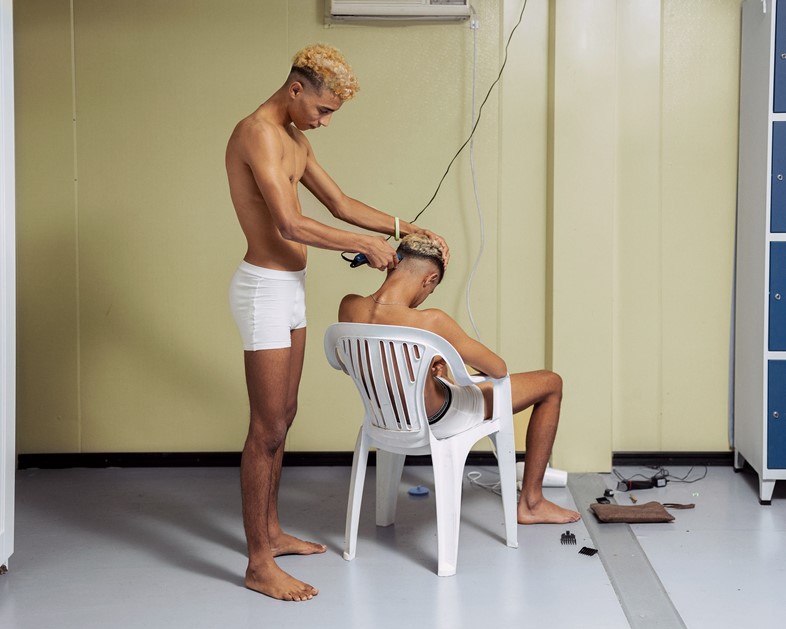
The work delves into a major global news issue, but you tell it in a completely new way, visually. Were you conscious of framing the migrant story differently when creating this series?
Felipe Romero Beltrán: It wasn’t meant to be a migration project. It was about this group of guys with this migration condition, which is so strong that it became one of the main axes of the project. I really liked the idea of this community or this small sample of society, that can be much more broader and much more general in society, especially in Spanish society.
Could you tell me about your own journey as a migrant?
Felipe Romero Beltrán: I was born and raised in Bogota, Colombia. In Colombia, it’s complicated to get a university education because it’s mostly private. Even in public universities, you have to pay. In Latin America, if you want to do something related to culture, you can go to Buenos Aires or Mexico City. I went to Argentina for my bachelor’s degree. I made my living through photography and assignments from the press and newspapers.
It’s interesting that you’ve chosen a path in high academia, having studied for your master’s and PhD in Europe.
Felipe Romero Beltrán: It was a necessity. I started my master’s degree to access documentation in Europe. When I finished, I lost my visa and became undocumented. The only way to stay in Europe was through the PhD. I almost know the entire Spanish immigration law because I had to figure out how to find these small gaps in the law to stay in Spain.
“You can’t define what is a body through a document. That’s a philosophical question. For me, there was a clear disconnection between the law and real life” – Felipe Romero Beltrán
This leads us to Dialect, in a way. In your words, what is Dialect?
Felipe Romero Beltrán: Dialect is about a group of guys in a complicated political and legal situation in Spain. They have to wait three years to get their documentation. In Spain, if you get undocumented or arrive without documentation, you have to wait three years without leaving or making trouble. Otherwise, you get deported. So the project was established on this timeline, which gave me the opportunity to develop it over a long period of time with the same people. It was also about learning how to approach topics that are complicated to deal with in the photographic medium.
From my understanding, it evolved from a more traditional approach to what we see now. Can you talk about that?
Felipe Romero Beltrán: We hung out and talked, and I started to make pictures of their days and also this weight that produces on the body, knowing you have to wait three years without doing anything, without legally working, without making noise. We spent so much time talking about strong experiences, and I realised I should bring this to the project. But the photographic medium was not able to bridge these (stories) because they were in the past. Then I encountered this tool from the theatre, of reenactments of past memories as a way to bring these moments to the present and be able to photograph them. Sometimes I’d take more traditional images, and sometimes I’d say, ‘Okay, guys, let’s reenact something around this memory or this dream.’
How much intervention did you have on the images?
Felipe Romero Beltrán: I normally use film, but this was on digital. Otherwise, it will be difficult to share the pictures with them. The camera I used was big and heavy, so I had my tripod. The camera’s ISO couldn’t go more than 100, so I put lights in the rooms because they were quite dark. But all the activities performed are candid.
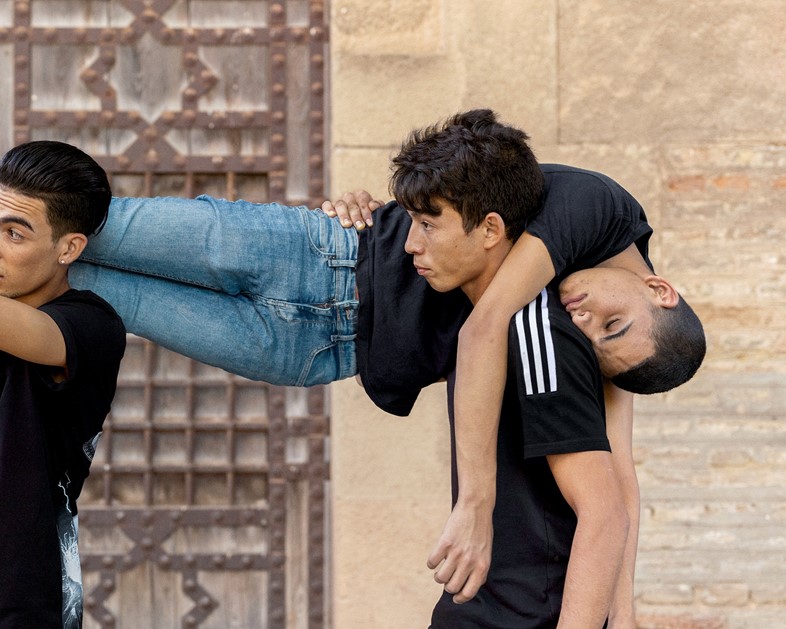
How did they feel about reliving some of those moments that were maybe more difficult?
Felipe Romero Beltrán: Everything was developed in a roleplay thing. Of course, in certain moments, it was a little bit intense because it was an intense experience. But they experienced this moment in their lives as something they deal with to make a living in a better place. So they were quite proud of that. They feel almost like heroes. Crossing the Mediterranean Sea, arriving to Spain, and making a living. So they were proud and open to talk about that.
The first film we see is of the boys reading Spanish immigration law. It’s not their first language, and from the stack of Spanish immigration law we see just outside that room, we see how complicated this is.
Felipe Romero Beltrán: My question was how to somehow translate this document of how to categorise and define what a migrant body is in Europe. It’s the political question of our times: who is a migrant? And what are the conditions to be considered a migrant in Europe? It’s impossible, of course, because you can’t define what is a body through a document. That’s a philosophical question. For me, there was a clear disconnection between the law and real life. That’s why you need a lawyer because there is a translation (needed).
It’s another border.
Felipe Romero Beltrán: Exactly. I wanted to establish this determination of governments to define a migrant body. For me, the first room (of the exhibition) is about the performing body and the law. In the middle, you have this stack of (immigration law) papers.

We then walk through a room where the film is playing and then into a hallway – a passage – which I found to be a really intimate space, more interior.
Felipe Romero Beltrán: It was also a journey, more intimate, closer and smaller. Images I was not comfortable showing as big as the others because of the intimacy of the bodies, of the guys. You have to be closer to the images because you don’t have room to get distance (from them).
There’s a second film called Instruction. Can you tell us about that?
Felipe Romero Beltrán: It’s about the process of communication between a group of European ballet dancers and these migrant guys that are trying to teach the dancers how to perform some movements (from crossing) the borderline. It’s this failure or impossibility to represent such a complicated and dramatic experience.
I was interested in making a live performance, but I realised it was more interesting and complex, the communication and tension between highly educated bodies in movement and the guys that have to perform and execute certain movements because they need to make a living through that.
What's next for you and these young men?
Felipe Romero Beltrán: We will keep working on Instruction, and I’m helping them on their projects in the music scene, producing videos and new music. I think they’re quite good.
Are they now documented?
Felipe Romero Beltrán: They are. They work in supermarkets and restaurants and study to become chefs. They’re making a decent, nice living.
Beltrán received the 2023 Paul Huf Award. Dialect runs at Foam until May 1, 2024. In 2023, Loose Joints published Dialect, which is available here.
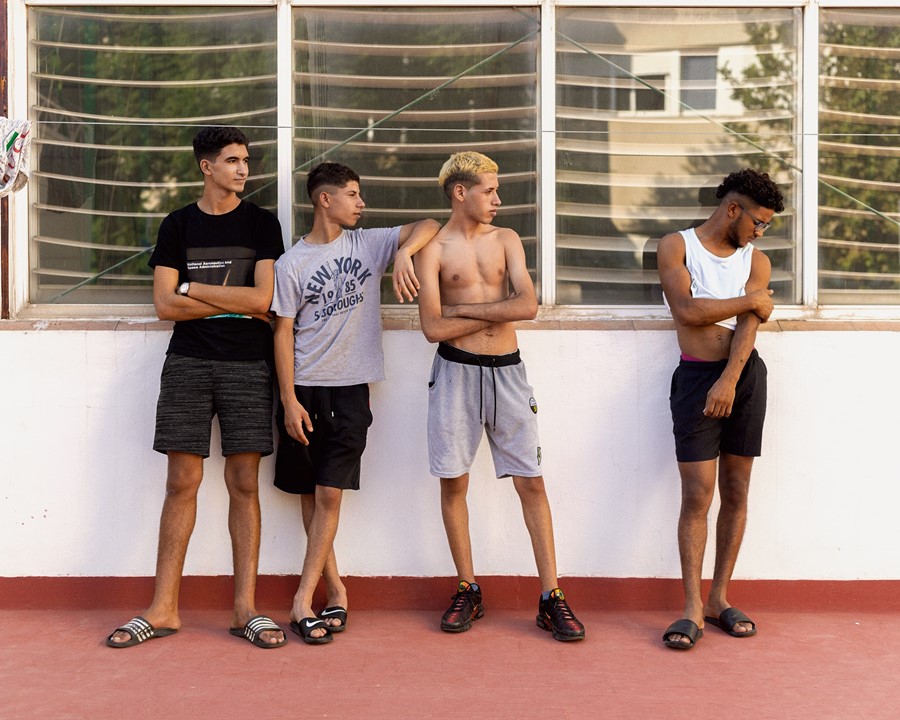
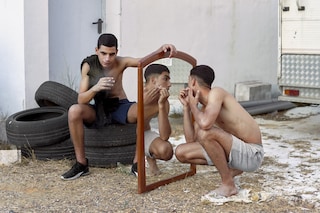

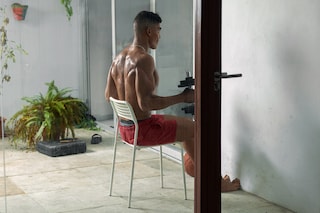
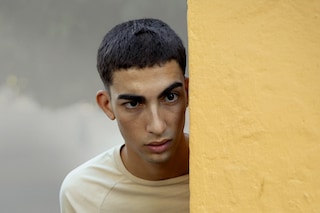
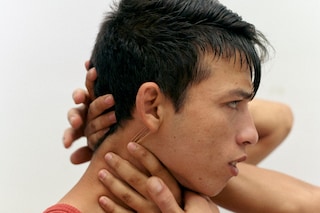




![Nan Goldin, The Ballad of Sexual Dependency [1986]](https://images-prod.dazeddigital.com/200/74-0-1388-1388/azure/dazed-prod/1310/9/1319932.jpg)